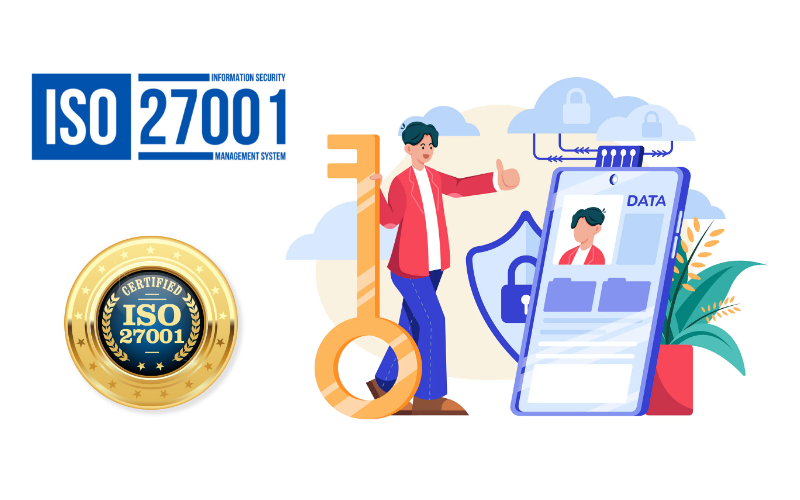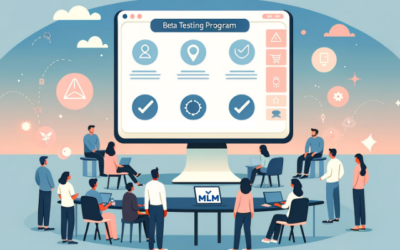In today’s digital age, protecting sensitive information is more important than ever. Data breaches can result in significant financial losses, damage to reputation, and even legal consequences. One way to ensure that your organization’s information is secure is by achieving certification to the ISO 27001:2013 standard. In this blog post, we will take a closer look at what ISO 27001:2013 is, the benefits of certification, the key components of the standard, and the process of implementing and maintaining it. By understanding and implementing ISO 27001:2013, you can take the necessary steps to protect your business and give your customers and partners peace of mind.
Introduction to ISO 27001:2013
ISO 27001:2013 is an international standard for information security management. It provides a framework for managing sensitive information, including personal data, financial information, and intellectual property. The standard outlines a set of best practices and controls for managing information security risks and protecting against potential threats. The purpose of ISO 27001:2013 is to help organizations establish, implement, maintain, and continually improve an information security management system (ISMS) to protect the confidentiality, integrity, and availability of information. By achieving certification to this standard, organizations can demonstrate their commitment to information security and provide assurance to customers, partners, and other stakeholders that their sensitive information is being handled in a secure and responsible manner.
The Benefits of ISO 27001:2013 Certification
Improved security: By implementing the controls and best practices outlined in ISO 27001:2013, organizations can reduce the risk of data breaches and other security incidents, and better protect sensitive information.
Increased credibility: Achieving ISO 27001:2013 certification demonstrates to customers, partners, and other stakeholders that an organization takes information security seriously and has implemented a robust ISMS. This can increase trust and credibility in the organization.
Compliance: ISO 27001:2013 certification can help organizations meet regulatory and compliance requirements, such as the General Data Protection Regulation (GDPR) and the Payment Card Industry Data Security Standard (PCI DSS).
Competitive advantage: Organizations that are ISO 27001:2013 certified may have an advantage over competitors in winning business from customers who prioritize information security.
Increased efficiency: Implementing an ISMS based on ISO 27001:2013 can help organizations manage information security risks more efficiently and effectively, by providing a systematic approach to identifying, assessing, and managing these risks.
Improved risk management: ISO 27001:2013 provides a framework for managing information security risks, which can help organizations identify and mitigate potential risks before they become major issues.
Continual improvement: ISO 27001:2013 requires organizations to continually improve their ISMS, which can help organizations stay up-to-date with the latest information security best practices and trends.
The ISO 27001:2013 TLTR
The key components of the ISO 27001:2013 standard include:
Information security management system (ISMS) framework: The ISMS is the overall system that an organization uses to manage its information security risks. It includes the policies, procedures, processes, and resources that an organization needs to implement and maintain its information security.
14 sections of the standard: The standard is divided into 14 sections, also known as clauses, which provide detailed guidance on how to implement and maintain an ISMS. These sections are:
Introduction
Scope
Normative references
Terms and definitions
Context of the organization
Leadership
Planning
Support
Operation
Performance evaluation
Improvement
Annex A: This annex provides a list of 114 controls that organizations can use to manage their information security risks. These controls are grouped into 14 control categories, such as access control, incident management, and business continuity management. Organizations are required to select and implement a subset of these controls that are relevant to their specific risks.
Risk management: ISO 27001:2013 requires organizations to implement a systematic approach to identifying, assessing, and managing information security risks. This includes conducting regular risk assessments, implementing controls to mitigate risks, and monitoring the effectiveness of those controls.
Continual improvement: ISO 27001:2013 requires organizations to continually review and improve their ISMS, in order to stay up-to-date with the latest information security best practices and trends. This includes conducting regular internal audits and management reviews, as well as taking corrective and preventive actions as needed.
Implementing ISO 27001:2013
Implementing ISO 27001:2013 involves several key steps, including:
Perform a gap analysis: A gap analysis is a process of identifying the differences between the current state of an organization’s information security management system (ISMS) and the requirements of the ISO 27001:2013 standard. This involves reviewing the organization’s existing policies, procedures, and controls, and identifying any areas where they do not meet the requirements of the standard.
Develop policies and procedures: Once the gaps have been identified, the organization can develop new policies and procedures to address them. These may include policies and procedures related to access control, incident management, and business continuity management, as well as others.
Implement controls: Based on the gap analysis and the policies and procedures that have been developed, the organization can then implement the relevant controls from Annex A of the standard. These controls may include technical measures, such as firewalls, intrusion detection systems, and encryption, as well as management measures, such as policies, procedures, and processes.
Conduct regular audits and reviews: To maintain certification to ISO 27001:2013, organizations must conduct regular internal audits and management reviews. These audits and reviews are used to check that the ISMS is being implemented correctly and that it is effective in managing information security risks. Any areas of non-conformity identified during these audits and reviews must be addressed.
Continual improvement: ISO 27001:2013 requires organizations to continually improve their ISMS, in order to stay up-to-date with the latest information security best practices and trends. This includes conducting regular internal audits and management reviews, as well as taking corrective and preventive actions as needed.
The implementation process may take several months to complete, and it is important to ensure that all the steps are followed correctly to ensure that the organization’s ISMS is robust and effective. It’s also important to involve all relevant stakeholders in the implementation process to ensure that the ISMS is accepted and adopted by all.
Maintaining ISO 27001:2013 Certification
Maintaining ISO 27001:2013 certification involves ongoing maintenance and continual improvement of the organization’s information security management system (ISMS). This is important because the threat landscape, regulatory requirements, and the organization’s own operations are constantly changing, which can introduce new risks that need to be managed.
Some of the key activities that organizations need to undertake to maintain their certification include:
Regular internal audits: Internal audits are used to check that the ISMS is being implemented correctly, and that it is effective in managing information security risks. These audits are typically conducted on a regular basis, such as annually, and any areas of non-conformity identified during the audits must be addressed.
Management reviews: Management reviews are used to check that the ISMS is meeting the organization’s information security objectives and that it is aligned with the organization’s overall strategic direction. The management review process should involve senior management and should be conducted on a regular basis, such as annually.
Continual improvement: Organizations are required to continually improve their ISMS in order to stay up-to-date with the latest information security best practices and trends. This includes taking corrective and preventive actions as needed, based on the findings of internal audits and management reviews.
Compliance with regulatory requirements: Organizations must ensure that their ISMS is in compliance with any relevant regulatory requirements, such as the General Data Protection Regulation (GDPR) and the Payment Card Industry Data Security Standard (PCI DSS).
Keeping the ISMS updated: Organizations must ensure that their ISMS is updated to reflect any changes to the organization’s operations or to the threat landscape, such as new threats or vulnerabilities, and new regulatory requirements.
Regular internal audits, management reviews, and continual improvement activities are essential for maintaining ISO 27001:2013 certification. They provide an ongoing assessment of the effectiveness of the ISMS, identify areas of improvement, and provide assurance that the ISMS remains effective in managing information security risks over time. They also help organizations stay up-to-date with the latest information security best practices and trends, and comply with any relevant regulatory requirements.
Conclusion
In conclusion, ISO 27001:2013 is an internationally recognized standard for information security management that provides a framework for managing sensitive information and protecting against potential threats. By achieving certification to this standard, organizations can improve their security, increase their credibility with customers and partners, and meet regulatory and compliance requirements. Implementing ISO 27001:2013 requires performing a gap analysis, developing policies and procedures, implementing controls and conducting regular audits and reviews. Maintaining certification requires ongoing maintenance and continual improvement, including regular internal audits and management reviews. Organizations that are committed to protecting their sensitive information and providing assurance to their customers and partners should consider implementing ISO 27001:2013 to improve their information security management. It is an investment to protect your business and your stakeholders and to gain a competitive advantage in the market.











